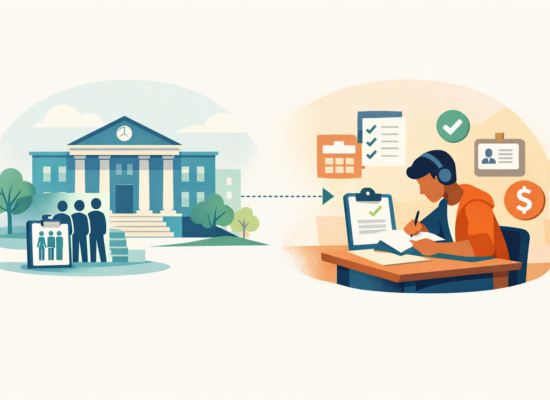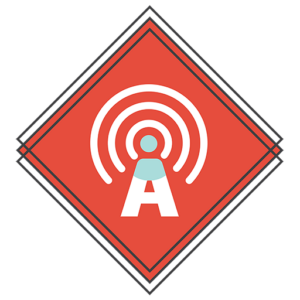
Updated: 3 October, 2025
Imagine you are a student at university, in an exam hall filled with hundreds of students, all taking the same test. You feel the nerves around you, which only fuel your own. You turn the page to a question you have no idea how to answer. Though you prepared thoroughly, and most questions so far have been easy, this one makes no sense—you’re stuck. Why? Because the teacher didn’t have time to cover this topic properly in class. While extreme, this scenario illustrates the importance of time management for teachers. This blog post will cover six key tips to improve time management in class.
In this article we will first go over the importance of time management for teachers. Then, we will discuss how you can improve your time management skills and what is a useful tool you can use to do this. The recommendations I give in this article come from my experience as a teaching assistant at Erasmus University.
Table of Contents
ToggleKey takeaways
-
- Mastering time management in the classroom allows teachers to cover all necessary course content adequately, ensuring that no crucial topics are left unexplored due to a lack of time.
-
- Effective planning and organization of course content, with careful consideration of the value, size, and dependencies of topics, can significantly improve the delivery and coverage of material.
-
- Allocating specific time slots for each topic and focusing on one subject at a time can help maintain a clear and structured learning environment, reducing confusion and maximizing student engagement.
-
- Building in flexibility for student questions and participation encourages a more interactive and responsive teaching approach, enhancing the overall learning experience.
-
- Utilizing tools like Attendance Radar for administrative tasks, such as attendance tracking, can save valuable class time, allowing for a greater focus on teaching and student interaction.
What is time management?
Time management is the ability to use your time effectively by organizing and planning how to divide your time between specific activities. It is most often used in the context of work where better time management can help to get more work done, in a shorter period of time, increasing productivity. With better time management you will be able to accomplish more, in less time and in a way which prioritizes more important tasks first. In the context of teaching, time management relates to allocating class time efficiently to ensure all content and questions from students are addressed.
The importance of time management for teachers
The importance of time management for teachers cannot be overstated. When teaching you often will have to cover a certain amount of course content in a fixed classroom time. If you do not manage your time effectively some content might not get covered or might be covered quite poorly in a rushed manner. This ultimately negatively affects your students as they cannot properly learn all the content in the course.
Moreover, poor time management may not allow enough time to answer questions or address doubts that students may have, further hindering their learning experience. This also highlights that the harder the course, the better your time management must be as one can assume that students will have more questions in a harder course. In addition, if students don't have time to answer their doubts, they might not perceive much value in going to class. This might lead them to skip school which has several consequences.
In addition, poor time management leads to an unbalanced workload, increasing the stress for yourself and also for students. By spreading the workload properly across all classes and managing time effectively you can reduce stress and promote your own wellbeing as well as that of your students.
Having good time management will improve the learning experience of students. It ensures that there is enough time to cover all course content properly, that there is enough time to answer questions and it also ensures that you have time to ask students questions yourself, promoting their participation. Students participating and making the class more engaging is one of the key ways to improve student attendance.

So this all begs the question, how can you improve your time management as a teacher?
Six time tips management tips for teachers
There are a variety of different ways to improve your time management as a teacher. In this section I will cover six key ways, based on my own experiences as a teaching assistant at Erasmus University Rotterdam.
Take a page out of the software development book when designing your courses
In software development we use a certain methodology which I believe might also be useful for course designers. When developing features in software you look at three things, the value this feature adds, the amount of work it will take to develop (size) and its dependencies with other features. To prioritize the feature development, you then consider all three to guide the development in a way that maximizes the value delivered to users in the shortest amount of time. Course designers could benefit from considering a similar framework when creating their courses:
-
- Value: This is the value students will get from learning a particular concept or topic in the course. Having a general idea of how the value of different concepts compares to each other would be good to prioritize. You can consider things like how useful this will be for the student’s career, how useful will this topic be for future courses within or outside the study, how much can this knowledge be applied to real life situations, to have a general measurement of the value.
- Size: How complex, hard or long is this topic. You may want to avoid long and hard topics to teach, even if they are valuable as they may take up too much of your class time.
- Dependencies: Sometimes students will need to learn certain topics before they can learn others. Thus, you can also consider these content dependencies when developing your course.
Considering these three concepts when deciding what topic to include in your course might greatly aid you to design a course that presents students with the most value, while cutting out unnecessary details. This will leave you with a more concise course that will be easier to manage the time for.
Evenly spread out the content between all classes
To help manage time in class one key thing you can do is make sure that you evenly spread out the course content across all classes. You want to avoid a scenario where you need to cover a lot of content in one class while only having to cover a little in another. To determine how you spread out the concepts across all classes the sizing and dependencies concepts covered in the previous point might definitely be quite useful. One thing that is important to consider is also the time that it might take to answer students' questions when teaching more complex concepts.
Prioritize the content in class
Within a specific class session it is also important to prioritize the content when managing time. You should cover the most important and most valuable content first, while leaving some of the more unnecessary yet useful concepts towards the end of the class. This helps in guaranteeing that you cover the most important concepts during class, also giving you time to answer any doubts students may have about them. Part of having good time management while teaching means you need to ensure that you cover the most crucial information, without exception.
Allocate time slots to each topic in a class
Apart from covering the most important concepts first, another way to improve your time management in teaching is to have time slots for each topic. You don’t need to impose this strictly but having an idea of how much time you should be spending on each topic will already do wonders for your time management. One important thing to consider here is leaving enough room for questions and participation from the students. Allocating time slots to each topic will also allow you to adjust the speed at which you are teaching accordingly. For example, if by a certain point in the lesson you’ve only covered two of the three topics you should have covered by then, then you know you need to speed up to make sure you cover everything.
Do not multitask

Don’t keep jumping from topic to topic but rather focus on explaining one topic at a time. By concentrating on one topic you will be able to explain it in a more efficient manner, taking less time to do so. This also helps students to follow along as they only need to try and understand one topic at a time, meaning they are less likely to ask questions or have doubts about what is being explained.
Leave room for questions and participation from students
Student engagement in class is very important. Therefore, you want to make sure that you are leaving enough room for questions and participation in class. Allocating time for participation is a bit easier as usually students will participate when you ask them to (e.g. you ask a question). Leaving room for questions is harder as you don’t exactly know how many questions students may have. One thing you can do to estimate the amount of time you’ll need to leave for questions is consider the difficulty of the topic you are teaching. Harder topics are obviously more difficult for students to understand, so they are likely to have more questions. For easier topics you can allocate less although still leave some time for questions.
Minimize time used for administrative tasks
Sometimes you will need to use class time for certain administrative tasks. One of the most common ones across all universities and schools is attendance taking. This is especially the case when classes are mandatory for students to attend. In order to improve your time management during class it is important to minimize the amount of time you are dedicating to these administrative tasks. Our solution, Attendance Radar, can help you with these!
Save time when registering attendance
Attendance Radar is a mobile application and web portal that will help you save immense amounts of time in class. Attendance Radar uses Bluetooth to track the attendance of a whole classroom in a matter of seconds and only in a couple of clicks. Our users have reported that they are able to track attendance of classes with hundreds of students very quickly, saving them a lot of important class time. So far, Attendance Radar has been used to track over 220,000 attendances. If we assume that using Attendance Radar saves 5 seconds in each attendance tracked, then that means that Attendance Radar has helped save more than 1.1 million seconds, 305 hours or over 12 entire days of class time! The importance of time management in teaching is immense, therefore, make sure you are saving as much time as possible when tracking attendance using Attendance Radar!
Author
-

Nicolas Montauban
Nicolas is the Product Manager of the Attendance Radar app at Codific. He is a certified Product Owner, an expert in digitalization and has a thorough understanding of the EdTech industry. Nicolas has an MSc in Business Information Management from the Rotterdam School of Management and a BSc in Economics and Business Economics from the Erasmus School of Economics. Additionally, he has worked 2 years as a Teaching Assistant at Erasmus University, giving him an inside look into the higher education industry. This experience has been extremely valuable for him, strongly aiding him in his role as Product Manager, as he developed a thorough understanding of how it is to teach and take attendance in university classes.
View all posts








